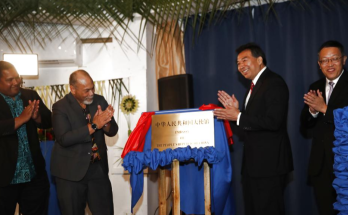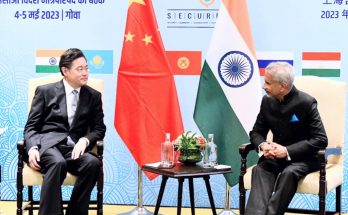
India, under the Modi government, is exploring new policy options to deal with an assertive and rising China. In the near term, there are a host of sensitive issues that can mar bilateral relations, but overall stability in the political relations can be expected between the two Asian powers in the medium-term.
As two major countries in the Asian region in terms of population, territory, higher economic growth rates and growing aspirations, the role of India and China vis-à-vis each other, and at the regional and global levels, is significant. Medium-term prospects of these two countries point towards relative enhancement in their respective comprehensive national strengths, gradual vanishing of “buffer zones” that existed between the two in the Asian region and a coalescing equation so far conditioned by the “cooperation and competition” dyad. Nevertheless, overall stability in the political relations can be expected between the two Asian powers in the medium term.
The Larger Picture: Power Asymmetry
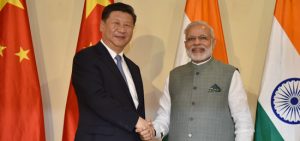 While India and China had begun almost at the same socio-economic levels since coming out of the colonial yoke, the latter made rapid strides in enhancing comprehensive national strength. Today, China has over $11 trillion in Gross Domestic Product as compared to $2.2 trillion for India. China had emerged as the second largest economy in the world and the largest trading partner for nearly 130 countries, although due to the “new normal,”GDP growth rates have fallen from 10 percent to about six percent and trading figures dwindling in the last three years. China’sdefence budget is the second largest in the world and increasing at over 10 percent every year for the last two decades. Some suggest that its comprehensive national power, ranked previously sixth in the world, has now been enhanced to the third position, after the USand Russia. While China previously abhorred military alliances, bases and hegemony, a “rejuvenated” China has now been staking claims for leadership in the regional and international domains through its One Belt, One Roadprojects. China’s military forces have been increasingly making forays intothe Pacific and the Indian Ocean regions, besides other global commons such as in the cyber and space domains. This indicates an ever increasing competition with the established powers both at the Asian and global levels. However, the main competition is likely to be between China on the one hand, and the US and Japan on the other, in the coming decades.
While India and China had begun almost at the same socio-economic levels since coming out of the colonial yoke, the latter made rapid strides in enhancing comprehensive national strength. Today, China has over $11 trillion in Gross Domestic Product as compared to $2.2 trillion for India. China had emerged as the second largest economy in the world and the largest trading partner for nearly 130 countries, although due to the “new normal,”GDP growth rates have fallen from 10 percent to about six percent and trading figures dwindling in the last three years. China’sdefence budget is the second largest in the world and increasing at over 10 percent every year for the last two decades. Some suggest that its comprehensive national power, ranked previously sixth in the world, has now been enhanced to the third position, after the USand Russia. While China previously abhorred military alliances, bases and hegemony, a “rejuvenated” China has now been staking claims for leadership in the regional and international domains through its One Belt, One Roadprojects. China’s military forces have been increasingly making forays intothe Pacific and the Indian Ocean regions, besides other global commons such as in the cyber and space domains. This indicates an ever increasing competition with the established powers both at the Asian and global levels. However, the main competition is likely to be between China on the one hand, and the US and Japan on the other, in the coming decades.
India, on the other hand, has been growing only recently with over seven percent growth rates and is gradually enhancing its comprehensive national power. While the service sector predominates, India is enhancing its manufacturing sector through the recent Make in India, Digital India and Skill India campaigns. Its consumption-driven economy, nevertheless, had provided India with sustainable growth prospects as compared to China’s economic profile, which is based on the export sector.India’s defence budget is increasing, but is no match to China even in the longer term although it had acquired notional strategic deterrence and its medium to long-range Agni V integrated missile programme has reached fruition. Overall, asymmetry in power relations with Beijing, however, does not deter New Delhi from exercising its options in the regional and global domains. Indeed, as a large country with over a billion people and strategic depth, India has its own plans and ambitions too, including the “Neighborhood First”, acting as a leading rather than a reactive power, “punching appropriately” as reflected in Project Mausam, Act East policy and the like.
India’s efforts to reclaim lost ground in the Asian region, after the debilitating 1962 border skirmishes with China, may pitch it against other Asian powers (specifically China and Pakistan) in the medium-term. This scenario suggests that due to its close relations with the US, Japan, South Korea, Vietnam and Singapore, India may expand its influence in this region, although this may be perceived as competing for influence against China.
Shifting Equations
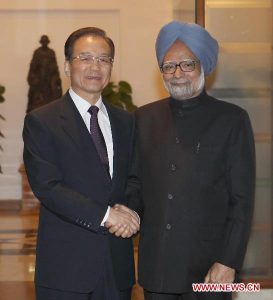 The ever-increasing recent growth trajectory of these two Asian giants and the fast vanishing spaces between the two in the Himalayas or in the South China Sea and Indian Ocean regions, however, has not led to any sharpening of conflict so far, although from medium to long-term, this could be one prospect. This is partly explained by the momentum achieved in bilateral relations in the recent times.
The ever-increasing recent growth trajectory of these two Asian giants and the fast vanishing spaces between the two in the Himalayas or in the South China Sea and Indian Ocean regions, however, has not led to any sharpening of conflict so far, although from medium to long-term, this could be one prospect. This is partly explained by the momentum achieved in bilateral relations in the recent times.
Firstly, the new political leaders in India and China had arrived at a “strategic consensus” in 2014 by building upon the “strategic and cooperative partnership” of April 2005. While both leaders agreed to deflect attention from the territorial dispute resolution even as both had been making concerted efforts to enhance their respective strategic and conventional deterrence, they agreed to implement preliminary confidence-building measures among the armed forces and maintain high level political engagement process across various establishments, including foreign, defence and home ministries. Thus, Prime Minister Modi met President Xi Jinping three times, with the Ahmedabad outing in September 2014 and Xian meeting in mid-2015, providing the setting for the much-needed personal rapport at the highest levels. The two Asian powers have also now begun “developmental partnership,” which will reinforce their economic engagement. While this elite-driven approach may not result in in-depth and long-term stable relations, for the short to medium term this approach could be effective in stabilizing bilateral relations, given the role of the central leaderships in these countries. Although many contentious issues like the territorial dispute, Tibet, Kashmir, South China Sea, terrorism, Nuclear Suppliers Group and UN Security Council membership cry out for resolution, the strategic communication between the two leaders is providing a modicum of stability in the bilateral relations currently. This is likely to continue over the medium-term as competition for resources, influence in other regions and leadership issues are muted as of now and are partly overshadowed by their equations with US and Japan.
Bridging Trade Deficit
Secondly, India and China, since the 2000s, have achieved relative economic interdependence with burgeoning, if imbalanced, bilateral trade. Ever since China joined the World Trade Organization in late 2001, its trade with the world moved up dramatically, and with India it increased rapidly to over $71 billion in 2016. While India lost over $376 billion in trade deficit to China between 2007 and 2016, bilateral economic trajectory indicates further enhancement, despite China not opening its market to Indian goods and services. Both are also further engaged in negotiations for Regional Comprehensive Economic Partnership at the East and Southeast Asian levels. With the demise of the Trans- Pacific Partnership, India-China economic engagement is expected to get an added boost, despite several reservations. Both have been coordinating responses at WTO, G-20 and other arenas on countering trade protectionist trends, even as India accuses China of not opening up its market. In the medium to the long-term, other issues like the internationalization of the Chinese Yuan/renminbi will be debated extensively by the Reserve Bank of India, both for any mutually beneficial regional currency arrangements or possible contest for leadership position in the currency-related issues. Despite promises to reduce the trade deficit by promoting investments to the tune of $20 billion between 2014 and 2019, China’s total investments in India have not surpassed $3.6 billion till 2016.
Core Interests
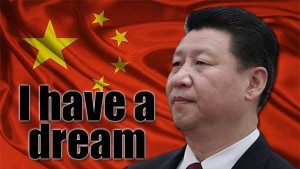 Thirdly, the strategic rise of the two Asian countries in the last two decades and their consequent knocking at the Asian gates has led to the early 2000s formulation that each has its own niche areas to pursue in the region. This was reflected in the idea that both countries have “enough space in Asia”. In 2006, during the visit of President Hu Jintao to New Delhi, both formulated the idea that they will elevate the bilateral interactions to the Asian levels. The two countries, in their joint statements, have indicated that they are “simultaneously” rising and that such rise is no threat to each other. However, this appears to be a stop-gap arrangement for the short to medium-term till contradictions become prominent in the long-term. Both also agreed to be attentive to each other’s security concerns, although progress in this regard is surprisingly low. Indeed, each accuses the other of violating each other’s neighborhood security and sometimes even “core” security interests.
Thirdly, the strategic rise of the two Asian countries in the last two decades and their consequent knocking at the Asian gates has led to the early 2000s formulation that each has its own niche areas to pursue in the region. This was reflected in the idea that both countries have “enough space in Asia”. In 2006, during the visit of President Hu Jintao to New Delhi, both formulated the idea that they will elevate the bilateral interactions to the Asian levels. The two countries, in their joint statements, have indicated that they are “simultaneously” rising and that such rise is no threat to each other. However, this appears to be a stop-gap arrangement for the short to medium-term till contradictions become prominent in the long-term. Both also agreed to be attentive to each other’s security concerns, although progress in this regard is surprisingly low. Indeed, each accuses the other of violating each other’s neighborhood security and sometimes even “core” security interests.
While China’s “dream” of creating its own “community of common destiny” of select countries in the longer term could posit this phenomenon initially against the US’ leadership position, globally and regionally, for the medium term, it is likely that the buffer zone spaces between India and China are expected to gradually vanish with leadership issues coming to the fore, step by step. China’s new-found urge to challenge the US in its leadership position has meant that Beijing would be wooing many nations in the world even as it marginalizes other powers. The One Belt, One Road and the Asian Infrastructure Investment Bank have already attracted 57 countries, with 20 more queuing in the last two years. While many of these projects are explicitly economic in nature, the implicit challenge to the US in Europe, Asia and Africa has been visible of late. For India, with the experience of being blocked by China in the Arunachal Pradesh developmental projects from Asian Development Bank, the AIIB finances for any China-Pakistan Economic Corridor projects will be closely monitored and blocked. India is the second largest contributor to the AIIB. With widespread reports about Chinese “security” guards in the Pakistan-Occupied Kashmir region, India-China relations could turn adversarial in the long-term.
India’s Policy Options
India’s equations with China are increasingly becoming complex and enmeshed in a range of bilateral and multilateral relations. In the medium to long-term, this is expected to become more complicated due to the rise of these countries in the regional and international orders. Even though both countries followed different engagement strategies and avoided explicitly targeting each other, future policy options suggest a more complicated picture.
Theoretically, India could follow an engagement policy of full-range intensive interactions with Beijing. Alternately, it could implement a status quo approach of deflecting and nullifying advances made by China in the economic and regional domains. Also, depending on Chinese military advances and sales to South Asian neighbours, New Delhi could be tempted to implement a counter-encirclement strategy.
One China & One India: Power Games
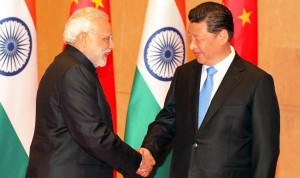 India has many options to deal with the rising China. Of these, India had predominantly approached China with various versions of engagement policy. This has been reflected in the recognition of Tibet and Taiwan as a part of China and New Delhi’s support to Beijing for the UN Security Council membership. However, India’s policies have been undergoing a rethinking recently, which is visible in its insistence with China that the latter reciprocate and follow “One India” policy. It was also reported that the new government that took over in mid-2014 in New Delhi has also been asserting its positions on a range of issues and the leadership is making no bones publicly in airing differences with Beijing.
India has many options to deal with the rising China. Of these, India had predominantly approached China with various versions of engagement policy. This has been reflected in the recognition of Tibet and Taiwan as a part of China and New Delhi’s support to Beijing for the UN Security Council membership. However, India’s policies have been undergoing a rethinking recently, which is visible in its insistence with China that the latter reciprocate and follow “One India” policy. It was also reported that the new government that took over in mid-2014 in New Delhi has also been asserting its positions on a range of issues and the leadership is making no bones publicly in airing differences with Beijing.
Prime Minister Modi’s references to the mobilisation of Chinese troops on the Indian border during President Xi Jinping’s visit to India, or his remarks in Beijing in mid-2015 about the activities of terror groups across the border, shows New Delhi will continue to stand its own ground in the future. Also, to counter China’s military modernization in Tibet, India has been strengthening capabilities through a Mountain Strike Corps, new air bases, the deployment of Brahmos cruise missiles in Arunachal Pradesh, Agni-series of missile operationalisation and naval modernization. These steps point towards buttressing of India’s strategic and conventional deterrent capabilities.
Unlike in the past, India is also leveraging a wide variety of diplomatic and strategic partnerships with the US, Japan, Singapore and Vietnam at a time when Beijing is trying to expand its appeal through One Belt, One Road project and cobbling up semi-military alliances with Pakistan and others. At the ideological level, a rising India is increasingly speaking about its democratic experiment as a possible model for others to adopt.Traditionally, this has been a contentious – if not made explicit – issue between India and China in their appeal to Asian, African and South American continents. Thus, the stakes are expected to be high for India’s relations with China in the medium to long-term.
 (Srikanth Kondapalli is Professor in Chinese Studies at Jawaharlal Nehru University. He is Chairman of the Centre for East Asian Studies, SIS, JNU thrice from 2008-10, 2012-14 and 2016-18. He has written many books, including China’s Military: The PLA in Transition in 1999 & China’s Naval Power in 2001. He received the K.Subramanyam Award in 2010 for Excellence in Research in Strategic and Security Studies)
(Srikanth Kondapalli is Professor in Chinese Studies at Jawaharlal Nehru University. He is Chairman of the Centre for East Asian Studies, SIS, JNU thrice from 2008-10, 2012-14 and 2016-18. He has written many books, including China’s Military: The PLA in Transition in 1999 & China’s Naval Power in 2001. He received the K.Subramanyam Award in 2010 for Excellence in Research in Strategic and Security Studies)
- This article was published in the inaugural edition of India and World, a pioneering magazine-journal focused on international affairs. The inaugural edition of the magazine, published by TGII Media Private Limited and India Writes Network, was launched by Minister of State for External Affairs M.J. Akbar in New Delhi in May.
Author Profile
Latest entries
 DiplomacyJuly 29, 2019South China Sea Imbroglio: Policy Options
DiplomacyJuly 29, 2019South China Sea Imbroglio: Policy Options China ConnectJuly 28, 2017Rising India & Rising China: A medium-term projection
China ConnectJuly 28, 2017Rising India & Rising China: A medium-term projection DiplomacyDecember 9, 2015PM Abe’s visit: Opening new vistas in India-Japan special ties
DiplomacyDecember 9, 2015PM Abe’s visit: Opening new vistas in India-Japan special ties Africa InsightsDecember 3, 2015A Tale of Two Players in Africa: Indian & Chinese responses
Africa InsightsDecember 3, 2015A Tale of Two Players in Africa: Indian & Chinese responses





